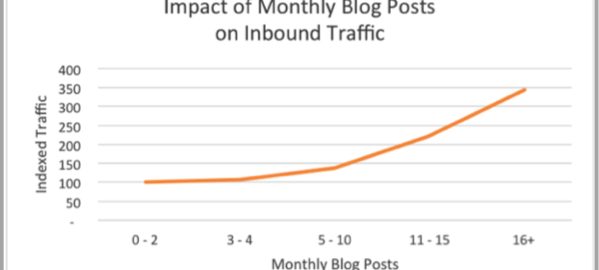
I’m often shocked by the websites of some people who approach me to do SEO work.
I am forced to question whether they are really ready for SEO, when it’s obvious that their website requires so much more important preliminary work.
Let me tell you what some SEO agencies might do:
- Ask you how many keywords you want to rank
- Ask you a bit about your business and your competitors
- Do some quick SEO audit checks on your site
- Propose some technical back-end stuff that they claim is for “on-page” optimisation
- Start building links
But what if…

… your website is horrific? What are the chances of site visitors liking you enough to buy anything?
There is no point driving cold traffic (people who don’t know you, and don’t even like you yet) to your website if your website is not positioned to convert it into warm leads.
From many years of working on both local and international SEO projects, I have accumulated a key list of things that you need to do before engaging in an SEO campaign.
Here they are;
1. Check if your website is functioning ok

If your website is small enough to check manually, go through every page and main feature to check it is functioning okay: this includes contact forms, download features, calculators, etc.
If your website is too big to check manually, use these tools to automate the process:
- Responsive Web Design Testing Tool– tests your website on different mobile devices
- Cross-browser testing tool – tests your websites on different web browsers
- Error page checker – identifies which pages don’t have content and displays 404 errors
- Website speed test – since speed is one of the Google ranking factors, the sooner you get it fixed the better chance users and Google are happy using your site. Get your developer to help withthis task.
- Broken links checker – checks if there are any pages on your website that have non-functioning links.
2. Fix your website design
Research shows that 46% of website visitors claim that website design is their number one criteria for determining the credibility of a company.
To start with, your website needs to focus on:
- Easy, intuitive navigation. Don’t try to be over creative and come up with something unusual.Users have certain expectations and wish to see certain things in certain places. For example, a horizontal menu is conventional. If you place the menu in the footer, users must scroll all the way down to find it. A lot would lose patience and bounce off your website.
- Clear identity, colour scheme and logo
- Good image and graphic quality
- Well-structured layout that highlights your most important products/services. Move the products’ key selling points and main calls to action above the fold where it attracts attention.
- Good contrast between text and background colours. Easy to read font size.
- Trust and credibility elements. Logos of partners, clients, media mentions, third-party reviews, certifications, associations, customer reviews.
- If you have any ‘On sale’ products, display them in an easy to access area – for example, the home page, side bar, pop-up, menu bar (on mobile).
3. Fix your mobile website
Mobile-friendliness is a must, not a want. From Mobile trends for business in 2016 by Orchestrate: Mobile Devices = Increased Consumption Levels.
Predictions for this year state that thanks to organic growth, mobile devices will outstrip desktops for the first time in mobile history.
Here are some noteworthy tips when you optimize your website for mobile:
- Simplify mobile check-out as users tend not to be as patient as they are on desktop. Reduce the number of fields in a form; facilitate better user experience such as using visual calendar instead of numeric dates; enable guest checkouts as well as 1-click checkouts for return customers. Here is an example of 1-click check out using Amazon payment:

- Implement a ‘Call’ button on every page. For example:

- Allow users to continue checkout on another device. This means you need to ask customers who are mobile browsing, whether they would like to start up a shopping cart that can then be sent to them later in an email, so they can resume any time in the future, from where they left of, and from any other device.
- Display only the most important content. A mobile screen doesn’t have as much room as a desktop, so the simplicity and single focus are the key to boosting your sales.
You can find a full set of mobile optimization tips from my article 9 Tips How To Sell Better To Your Mobile Visitors.
4. Get content ready
Gone are the days when your content can simply comprise of a shopping list of your products. These days, for content design to work, it must be based on insights into your customer’s mind, it needs to intelligently answer the questions they will ask and it must earn authenticity by viewing the world through their lens.
Check your website to ensure it:
- Clearly introduces who you are and what you do
- Lists your office address and contact phone number so that they can be easily found
- Highlights your value proposition (simply what do you do better than your competitors)
- Provides a detailed description of your products: including your product specifications, materials, colours, shipping and return policies
- Hosts a product demonstration: a video showcasing how the product or software works. If you provide services, your video could be case studies.
- Includes reviews or testimonials on your product and services. Try to get some video testimonials.
- Has a separate page for separate services: are you combining all services you offer under ‘Our Services’? You should have separate pagse dedicated to each service so you can present everything about that service (all possible questions that your prospects might ask should be answered on that page).
Here is an example of a good product page;

A sharp comparison with the following product page from hipkids.com.au…
This is an example of a poor product page: It lacks, vibrant and lively images from different angles, a robust product description, supporting information such as reviews and a value proposition. Thus it can’t help prospects go to a buying decision.

A blue ribbon product page includes:
- High resolution and vibrant product pictures
- Demo videos of the product, if needed. Use a specialist company like YouTubeHelp if you need assistance with this.
- Very detailed product description as well as all other needed information for a buying process such as: product specifications, origin, brands, usage instructions if needed, shipping, payment, return, safe & secure
- Clear value proposition and product differentiators
- Shipping cost calculator
Know what main products/services you want to promote. If you have an e-commerce website with hundreds of categories and thousands of products, you need to know which products are the most important (high profit margin, popular selling) so you can promote them more strongly with an SEO campaign.
Know what other locations you want to target and prepare content for these specific pages. If you offer services in different suburbs or cities, check that you have different pages for each location with full contact information on each page.
For example, Bill Removalists Sydney offers services in more than 200 suburbs in Sydney and surrounding cities. We created a separate page for each location.

Example of Bill Removalists Sydney: by creating separate location pages, Bill Removalists Sydney is more likely to rank for location keywords.

Example: Gordon Vet didn’t rank for Roseville vet on Page 1 until 4 months ago when they tried to rank for all the targeted keywords on their home page. We created a separate page for Roseville and other main suburbs and the hospital is now on page 1 for the “Roseville Vet” keyword.
Check whether your SEO agency can handle this or whether you have to do this yourself.
5. Know your differentiating factors
As you know, customers usually check out several sites before making an enquiry or purchasing decision. Do that job for them, or make their lives easier, by mentioning the key benefits/differences of your products, whether it is price or product/service features. Consider creating a product review comparison that includes your competitors so that it’s a no-brainer decision for them to choose you over your competitors and so they do not have to leave your page.
There is no one right way to go about it, but I suggest you start with the following formula:
- Headline. What is the end-benefit you’re offering, in 1 short sentence? It can mention the product and/or the customer. Make sure it is attention grabbing.
- Sub-headline or a 2-3 sentence paragraph. A specific explanation of what you do/offer, for whom and why is it useful.
- 3 bullet points. List the key benefits or features.
- Visual. Images communicate much faster than words. Show the product, the hero shot or an image reinforcing your main message.
Evaluate your current value proposition by checking whether it answers the questions below:
- What product or service is your company selling?
- What is the end-benefit of using it?
- Who is your target customer for this product or service?
- What makes your offering unique and different?
- Use the headline-paragraph-bullets-visual formula to structure the answers.

Comments about this example;
- There is a clear statement about what it is and for whom
- There is a list of benefits
- There is a relevant image
Don’t be confused between slogan, tagline and value proposition/product differentiators. A positioning statement is a subset of a value proposition, but it’s not the same thing.
For example this is not a value proposition, this is a slogan or a catch phrase.
L’Oréal. Because you’re worth it.
And this is also not a value proposition, it is a positioning statement.
America’s #1 Bandage Brand. Heals the wound fast, heals the hurt faster.
6. Improve the quality of your product images and company photos
Don’t think that you can sell anything with low quality images on your e-commerce site. Users rely on good quality visuals to buy things online and if your products are not catchy looking, they will be passed over.
Picture quality strongly influences a purchaser’s desire for a certain product.
For example, poor presentation with low-resolution pictures, and images from different angles will not generate much desire for this wardrobe.

A more appealing presentation that includes high quality pictures from different angles, does a much more effective job of generating desire for this product.

People like dealing with real businesses. If you provide services; keep your website updated with the latest staff photos instead of showing photos from the early 2000′s. If you have an office and staff, showcase them on your ‘homepage’ and ‘about us’ page so web visitors know that you actually have a physical business instead of a virtual office online.
7. Focus on conversion
Traffic is expensive and the cost of attracting a visitor to your website is rising. Therefore your site needs to convert as many visitors into sales as possible, to give you better value for your dollar.
Start by surveying your customers using solutions like Webengage or Qualaroo, which offer templates designed to investigate conversion optimisation. This will tell you why your website visitors aren’t buying or what parts of your website they find confusing.
Use that data to drive changes to your website. Create A/B tests (testing version A with version B of a webpage), and ensure you run these tests until they are statistically significant.
Focus on getting big conversion wins, by making drastic changes to your web pages, then pedantically monitor the effect of those changes.
This sounds far more technical than it actually is, but if you are still unsure, consider getting help.
8. Start blogging
Blogging is a powerful tool that generates authority while providing a vital connection to what’s important to your audience through their comments. Blogging is good for your soul. It forces you to clarify the results of years of research and is your free gift to the world.
Research by HubSpot on its 13,500+ customers in 2015, shows that companies that published 16+ blog posts per month got almost 3.5X more traffic than companies that published between 0 – 4 monthly posts.

You should start a blog because it can do wonders for your business. Don’t expect miracles in a short period, but within a year, your blog should be kicking butt if you are writing great content. If you start this early, by the time you engage in an SEO campaign, your SEO results will really impress you or your boss.
Blogging isn’t free.
I started blogging years ago because I thought it was an affordable way to drive more business to my startup. And although it’s effective, it isn’t too affordable. Sure it’s cheaper than most marketing strategies, but it still costs a lot of money to do it right.
Let me explain:
- Your time (2 hours/week for each article)
- Your writer’s cost (3-4 hours of her/his time)
- Graphic design needed for content such as Infographics, videos (around 9 hours for content idea generation and infographic design and development)
I don’t mind the expense, but I want to let you know that if you have to spend money make sure that you do things right. Make it the best blog in your niche, that you can. Without spending money, it’s rare that you can create a blog with a big audience.
The above points are just some examples of expenses you will incur. You can spread out your expenses over time and do things on a budget, but don’t expect to create a great blog for free. If you don’t invest in your blog, it won’t grow as fast.
If you aren’t sure on how to get your blog started, just follow my steps in this article “How Can I Grow My Websites’ Organic Traffic Tenfold.” And if you get stuck on content, I can recommend Media Momentum as a company that can provide high-quality help for a reasonable cost.
It’s really important that you follow through on the promoting part because without it, your content won’t do much for you. With it, you’ll start noticing your blog getting more search engine traffic than your main site.
9. Build up your social media profiles: Facebook, Twitter, Pinterest, Instagram
Start building up your social profiles and fan base early so you have a community to share your awesome content with and generate social signals for your SEO campaign. Social signals are used within search engine algorithms; therefore don’t wait until you engage in a SEO campaign to start your social media presence.
Don’t try to be on every social media channel. Just be on those that your audience are on. As a business finance broker providing credit services for small business and individuals, Facebook might not be the one. Think about it. Who wants to share an article about credit car finance on their Facebook page?
You can do this
SEO is not cheap and before you engage in this process, you need to get your website ready in terms of functionality, design, content, images/graphics, social media presence and optimising it for conversion.
What else do you think should be done before engaging in a SEO campaign? I can’t wait to hear your thoughts.
Digital & Social Articles on Business 2 Community(84)







